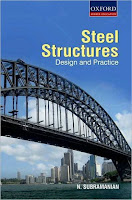An Introduction to Fluid Mechanics
 Faith A. Morrison ... 940 pages - Publisher: Cambridge University Press; 1st edition ... Language: English - ISBN-10: 1107003539- ISBN-13: 978-1107003538
Faith A. Morrison ... 940 pages - Publisher: Cambridge University Press; 1st edition ... Language: English - ISBN-10: 1107003539- ISBN-13: 978-1107003538This is a modern and elegant introduction to engineering fluid mechanics enriched with numerous examples, exercises, and applications. It is based on Faith Morrison's vision that flows are both beautiful and complex. A swollen creek tumbles over rocks and through crevasses, swirling and foaming. Taffy can be stretched, reshaped, and twisted in various ways. Both the water and the taffy are fluids and their motions are governed by the laws of nature. The goal of this textbook is to introduce the reader to the analysis of flows using the laws of physics and the language of mathematics. This text delves deeply into the mathematical analysis of flows, because knowledge of the patterns fluids form and why they are formed and the stresses fluids generate and why they are generated is essential to designing and optimizing modern systems and devices. Inventions such as helicopters and lab-on-a-chip reactors would never have been designed without the insight brought by mathematical models.




